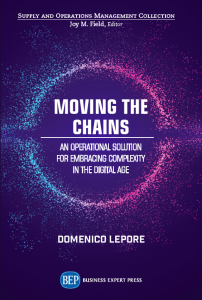
The Business Roundtable recently announced a major policy change declaring that the purpose of a corporation is not just to serve shareholders – its official position since 1997 – but “to create value for all our stakeholders.”
Over the last 25 years, Intelligent Management has developed and implemented a systemic approach to management that inherently brings attention to the implications of decisions for all the stakeholders involved.
The following is an extract from the new book, ‘Moving the Chains’ by our Founder Dr. Domenico Lepore. Incisive, insightful and pithy as ever, Domenico charts out how C-suites can move beyond the current bind they are often in.
A C-Suite with a Clear Purpose
Transformation requires not just technology but new thinking, new methods, and a new outlook. That is the only way we will be able to accomplish what is needed: transformation of the prevailing silo-based management style into one of whole system optimization. This transformation is no longer a choice; digital technology is making it unavoidable and it is dictating the pace.
Transformation requires relentless effort, but ultimately, it allows organizations to consistently fulfill their role in the world with the highest quality and speed. This requires knowledge, method, and tools, and it requires a special kind of leader.
Anyone who has any experience with leadership in corporate life cannot fail to see how profoundly damaged this life can be. The kind of interaction that creates a cage for CEOs and Boards is often surreal and sadly too often tragic for all the stakeholders. Just to make sure we are clear: CEOs spend a lot of their time trying to prove to the Board and the investors they represent that what the company is doing makes sense; in order to do so, they meet with the Board three or four times a year and engage in conversations that span from strategy to GAAP-based financial results. Indeed, Boards are only privy to what the CEO (and the CFO) wants them to know; the financial transparency is guaranteed by some audit subcommittee and the strategy is discussed by people that, more often than not, have mental models that are the reason for which they have been summoned. Doesn’t that sound a bit like Enron?
It doesn’t have to be like that. The Conflict Cloud we looked at for complexity, hierarchy, and change can be used very specifically in the setting of any organization to capture their specific Core Conflict, i.e., the inherent conflict of that particular organization. Once that has been captured and the assumptions are surfaced, we have the possibility to develop a full, systemic set of “injections” [systemic solutions] to those assumptions. Another way of saying it is: we now see clearly what is keeping us stuck and, logically, we also know how to come out of the “swamp” we are in.
The path out of the swamp, or any path forward, must be sustained by a clearly elucidated cause–effect map. This map must provide
(a) Some epistemological (knowledge-based) rigor
(b) Some ability to predict the outcome of the actions to be taken
(c) A realistic schedule of how and when these actions will be taken
This is what we have labeled as “Projects.”
Intrinsically, the work of any organization is made up of the network of all the projects that emerge from the injections to a well-articulated core conflict. The role of Leadership (Board and C-suite) in this context is therefore very clear. It is to
(a) Create the environment for these projects to be conducted successfully
(b) Supervise their execution
(c) Intervene in a timely manner with corrective actions triggered by
unanticipated statistical fluctuations
(d) Ensure that every stakeholder benefits from the success of the projects
If somebody is willing to spell out the basic (very few) details for a Board to operate in this way, we will be able to spare ourselves much of the chatter on corporate governance that currently clouds the issue. This transformation is neither easy nor for the fainthearted and it is only possible if we recognize and embrace the new paradigm of interconnectedness we live in. Recognizing the emergence of a new paradigm is very difficult and takes time; but it also takes a new kind of intelligence, one that is capable of understanding the multidimensionality of the implications of our choices: physical, mental, and spiritual.
It is not just about seeing the forest where everyone else only sees trees, it is about understanding the forest as the emergent property that is generated when a number of trees grow together.






Leave a Reply